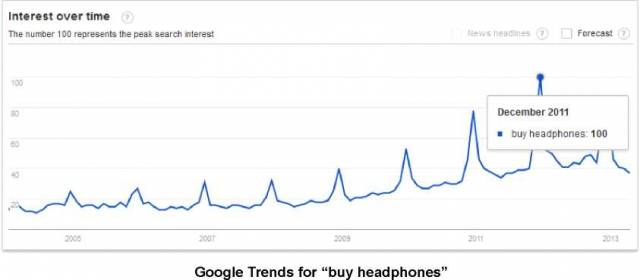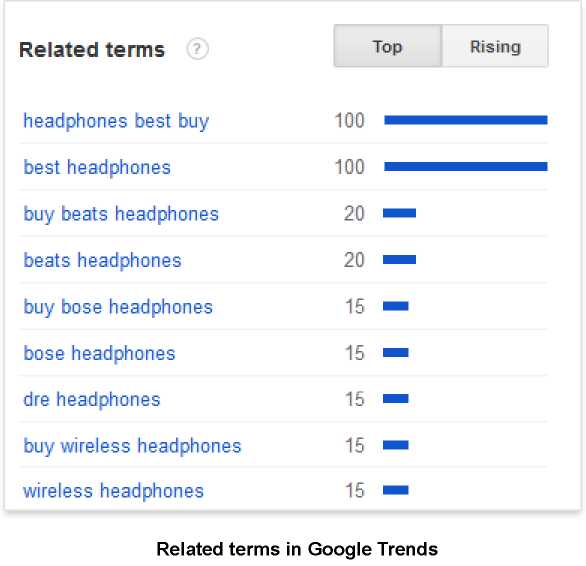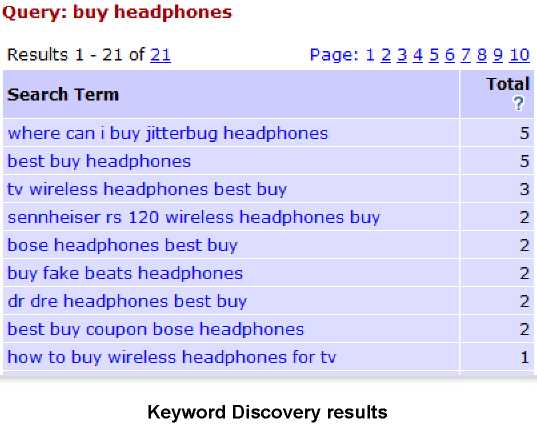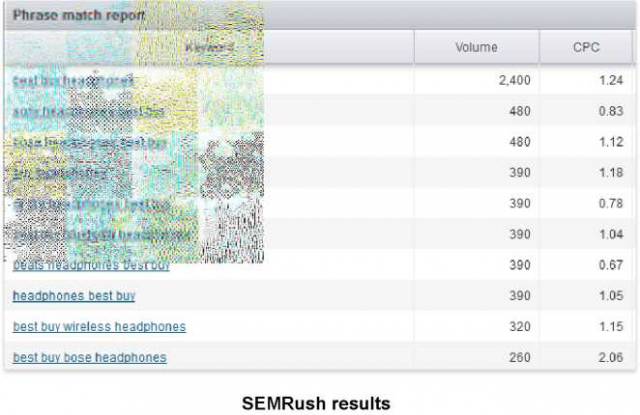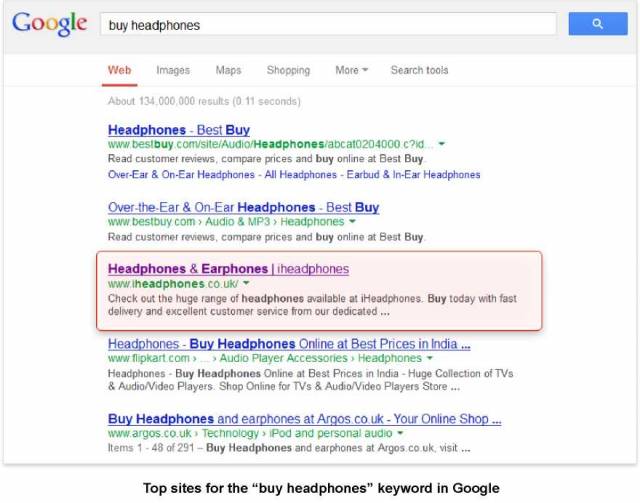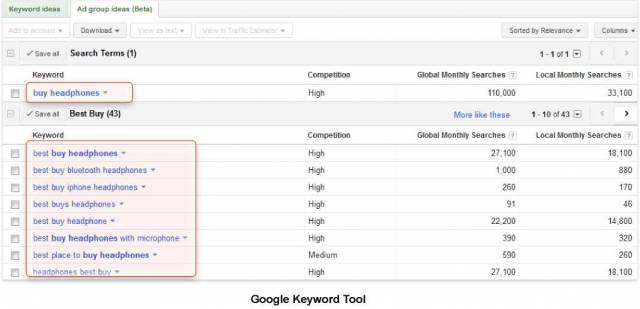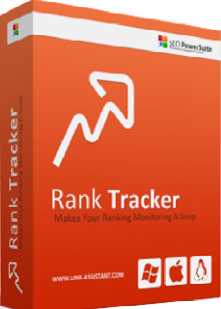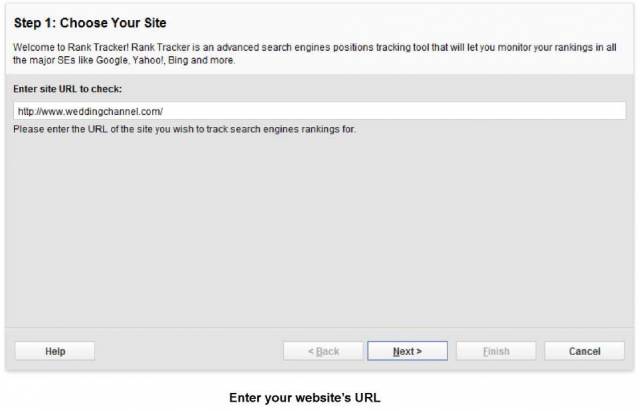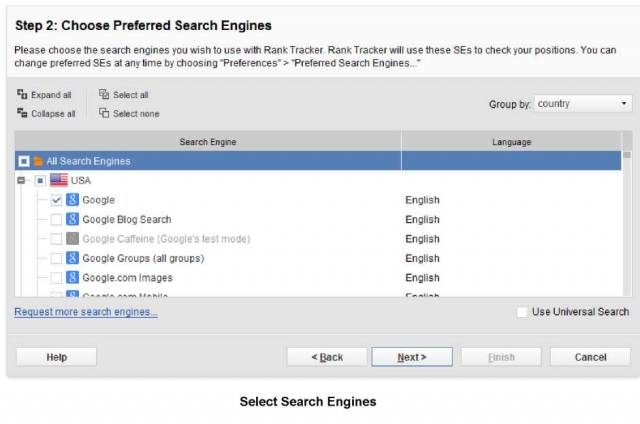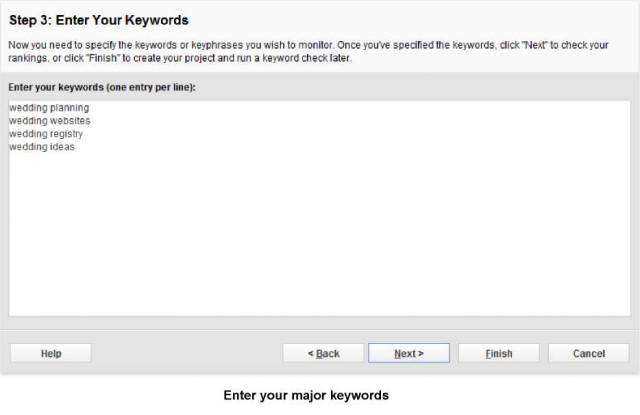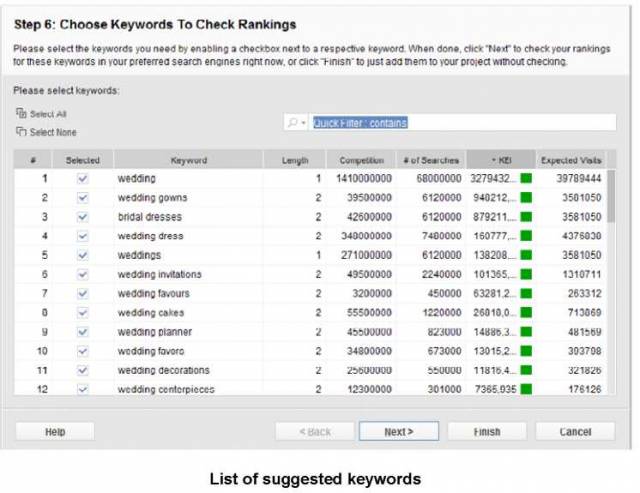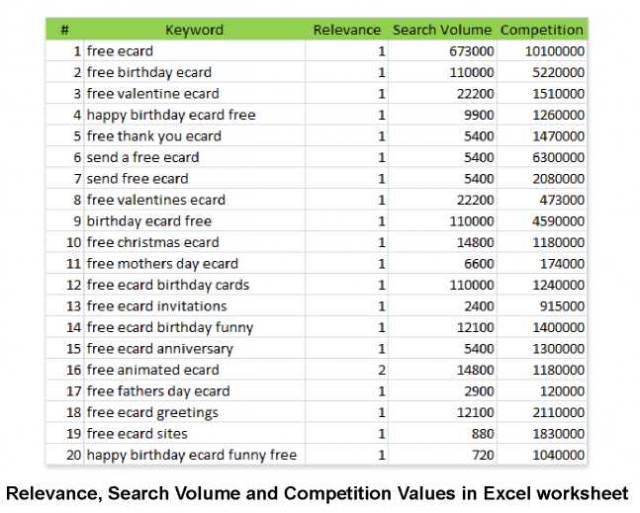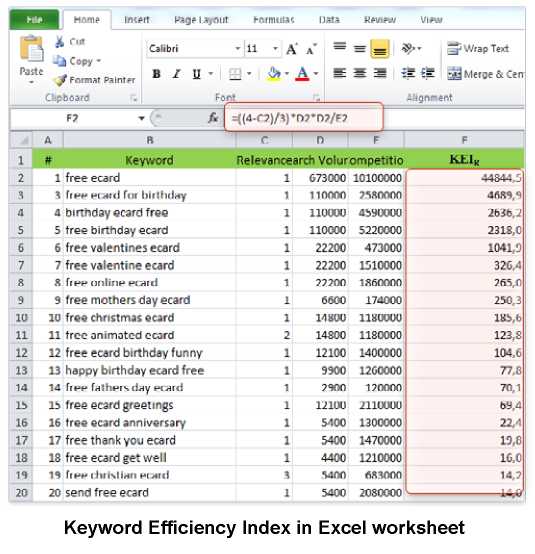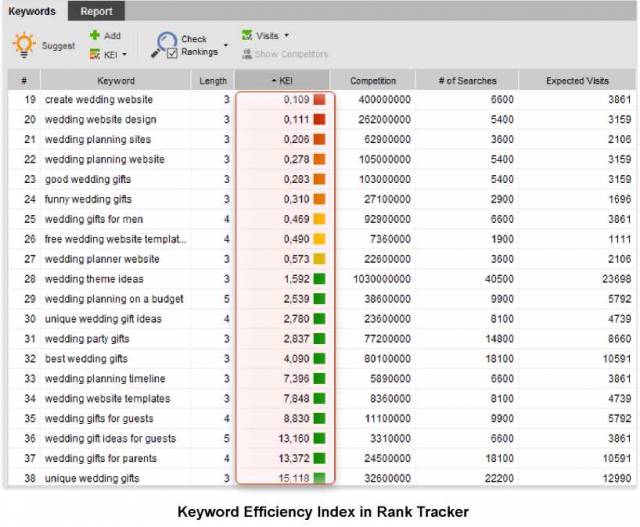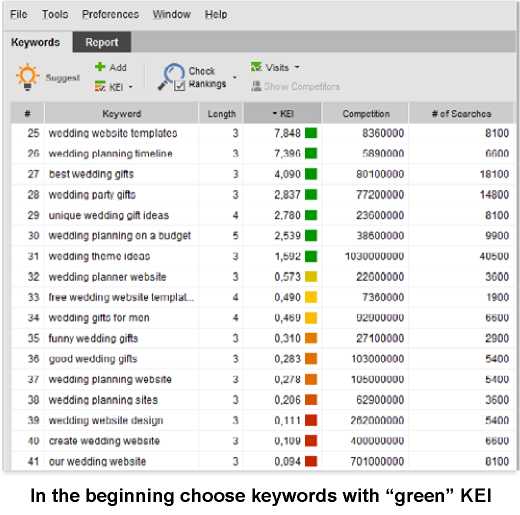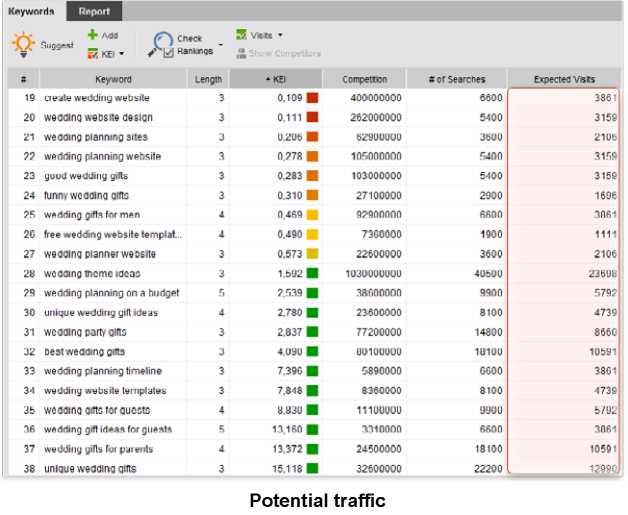Choosing Keywords
In fact, we’ll carry out the keyword research in two steps:
Here, I have a thing to tell you: as ever, there are options, both winning, to choose between. First on every step, I describe a free but tedious way to get what you need. It’s free but it takes one or two working days each time you go through it. Still even if you’re going to save your time and stick with the faster option, you’d better not skip other pages. You won’t regret reading them, as you’ll have a great chance to learn how Search Engines and special SEO software work. After that, I’ll get down to the faster option: a smooth keyword tool that makes keyword research a snap and also makes a lot of work for you at further steps. So let’s start. GETTING KEYWORDS FROM EVERYWHERE AND NOWHEREOPTION 1: FREE KEYWORD RESEARCH DIYMake your first list of keywordsAs of now, you have to exercise your brains a while. So get ready, it’s time for brainstorming. To start with, make a list of every word or phrase you can think of that people might use to find what your site offers. Ask anyone you can to give you ideas — you never guess what alternatives your colleagues can offer. Just like my boss often searches for search engine marketing — and I prefer website promotion, any of your colleagues or friends may have a different idea of how your product can be found. If there is no one to ask, use Thesaurus (http://thesaurus.com/) to search for synonyms. And, use an Excel spreadsheet to put each keyword as a separate record in it, as you’ll need to do some calculations later. Think of some keyphrasesAfter you have a list of single words, think of keyphrases. Try to combine the words you have on your list, or add other relevant words that better describe your product or service. Again, ask your friends and colleagues for input and try to find people that are within your site’s target audience to get an idea of how they would search. Also, take into consideration variations in terminology as determined by one’s age, profession, what part of the world they are from, and so on. Remember that there are often several ways of saying the same thing. The simple example is headphones. My dad rather calls them headsets. And Mike often says earphones. And, first and foremost, my advice here is:
Answers can come from most unexpected places. Want an example?
And the thing is: the fewer things people know about SEO, the better keyword ideas come to their minds. Use the web to get moreOnce you have a good starting list of 20-40 words, use search engine databases to refine it and see what people have actually searched for when looking for similar sites. Here’re the three most popular resources for doing that: Google’s Keyword Tool (You can find it at https://adwords.google.com/select/KevwordToolExternal) Quite a useful thing. Select to generate keyword ideas with Descriptive Words or Phrases. Enter a keyword for the start and go ahead to get a nice list of keywords. Google Trends (http://www.google.com/trends/) The good thing about Google Trends is that it provides keyword data for a selected time period and thus lets you see which keywords are seasonal. As they say, forewarned - forearmed. Knowing when people search for your targeted keywords and when they don’t will help you foresee potential traffic (and, consequently, conversions and profit) drops and increases. The results provided by the tool are also broken down by region, city, language, category and time range. On the screenshot above you can clearly see that most of all people search for headphones in December. This can be applicable to many e-commerce products, as in December we start looking for Christmas presents, don’t we? :) Google Trends also has a "Hot Searches” feature that shows the top 10 queries in a selected region on a given date. Somehow, I am not surprised that guys search for "Halloween history” on October 31st, and "santa tracker” on December 25th :) However, what we are currently interested in is the "Related terms” box, where you may get additional keyword ideas for your research.
My experience shows that this tool is useful for analyzing some very fresh keywords that have not so many searches and are neglected in Google AdWords Keyword Tool stats. Wordtracker (http://www.wordtracker.com/) is a paid service for regular use, but it offers the benefit of a free version, which can be used to complete your keyword research if you are fairly organized. Free Wordtracker (http://freekeywords.wordtracker.com/) is almost equally useful as the paid one. If you enter your main keyword, Wordtracker lists out suggestions for other popular search terms that contain that particular word or phrase. However, like any free tool, it has a few downsides. For instance, it won’t store your keywords for future use, it only gives you 100 suggestions and lets you get suggestions for just one word at a time. Keyword Discovery (http://www.keyworddiscovery.com/search.html) can also be quite helpful, as long as it’s free. The drawback is again, that you can only ask for suggestions for one keyword at a time, and won’t be able to check more than 100 keywords daily. Besides, like the rest of free tools, it won’t store your keywords for the future.
Ubersuggest (http://ubersuggest.org/) is another free keywords suggestion tool to help you expand your list of keywords. SEMRush (http://www.semrush.com/) is a valuable tool too, especially if you have a subscription. Among other reports, it provides you with related keywords, and the list of domains that rank for this or that term. Spy on competitorsLet us be honest: each SEO is a spy. As any marketers, we always keep an eye on our competitors to get more ideas. So don’t miss a chance to borrow some nice keywords from your peers. One of the ways is to use the free Google Keyword Tool again. Choose some keyword phrase you’d like to use and enter it in Google’s search field. That’s a way to find the top websites you would have to compete with. Here’s an example of how it’s done: Say, you sell headphones. First, type in buy headphones in Google to see who your main competitors are. On the screenshot above you see your online competitors. To make the research more efficient, you may perform a quick examination of each of them to decide whether you ACTUALLY compete with it or not. For example, we are definitely not interested in competing with Wikipedia (though, unfortunately, you’ll probably have to), and are less interested in peeping into the keywords targeted by a large e-commerce website where all types of products are sold (like Tesco, Amazon or Bestbuy.com). What we need are websites selling the range of products similar to yours. That’s why for deeper analysis we selected ... wait for it ... iheadphones.co.uk. Now you copy this URL (http://www.iheadphones.co.uk/) to the clipboard, go to Google Keyword Tool (https://adwords.google.com/select/KevwordToolExternal) and instead of entering keywords, enter your competitor’s URL into the “Website” field. Now wait a couple of minutes, and Google will surprise you with a great list of keywords your competition is using. How about noise cancelling earphones or in ears headphones? Might bring you visitors, too. On the second tab (Ad group ideas) the ideas are sorted by groups (pretty obvious, right?), which allows you to quickly select the groups of products you offer and would like to promote. Now check some more competitors the same way — and see how your keyword list grows bigger, with the new keyword ideas you’d never think of! Another way to see what keywords are targeted by your competitors is to check their meta <keywords> tags. At the dawn of SEO it was believed that these tags had some influence on rankings. Therefore, SEOs began stuffing these tags with keywords they wanted to rank for. Of course, such manipulative tactics were quickly noticed by Google with the tags becoming unimportant, but some people continue filling them with keywords or simply do not delete the existing ones. Whatever the reason may be, there are some meta keywords on Iheadphones.co.uk: Meta keywordsNow it’s your turn. Go to your competitor’s website main page, click Ctrl+U and there’ll appear a page with the source code, at the top of which you’ll see the desired Meta keywords tag. It can be found in the <head>, i.e. at the top of the source code page. You can either scan it yourself, or click Ctrl+F and start entering the word "keywords”. After you enter a few letters the tag will be highlighted. Put human mistakes at your serviceBy the way, it’s a good thing to consider misspelled keywords. Your SEO in Practice guide is the rare SEO book that will mention it, but that’s a great way to get new ideas without even using any special keyword tool. Think of misspellings that may occur for the keywords you want to target. People do make mistakes when they type in search terms. And this does happen more often than you might think, believe me. Want to check it yourself? Type gaurantee in Google. I’ve just checked and found 2,720,000 . Those are the smart guys! Or even better, try sports equiptment. Brings 7,390,000 results! So as you see, people do misspell words, use them on their sites, optimize for them and get a good portion of traffic. Now come on, let’s make a "Welcome” sign for all absent-minded guys: use a couple of misspellings on your site — and you’ll get your portion of traffic. So keep misspelled keywords, since if you misspell them, others might do the same and find exactly your page. And, for the time being, just put misspellings on your list. Everyone loves the local guy!It’s sometimes very useful to localize your keywords. For instance, a guy from Bronx won’t search for simply car wash. He will type in car wash New York, or even more likely car wash Bronx. So if you optimize for a localized term, you’ll get more visitors who want to get what you offer exactly where you offer. Therefore, if your business location matters, what you have to do now is, create keyword combinations with local names. Tiny variations make a great matterMost Search Engines (like Google and Yahoo!) make a distinction between singular and plural forms, as well as stemmed variations — gender forms, or "-ing”, "-ed” forms. So don’t forget it may be very useful for you to target different forms of the same words as well. It’ll bring some portion of searchers to your site. Maybe not that many of them, but as long as you make a sale, it’s worth the effort. Like, if your main term is birthday cards, it’s wise to consider birthday card as well. Come on, type these terms in Google! You get 140,000,000 results for birthday cards — and 232,000,000 for birthday card. Now, if you optimize for both terms, you’re the smartest! Now the talk comes to using software for keyword research — that’s for getting new keyword ideas, checking how profitable they’ll be and tracking positions of the already selected ones. So go ahead, your SEO book shows you how simple and fast it can be with a brilliant keyword tool. OPTION 2: HARVEST QUALITY KEYWORDS IN A MATTER OF MINUTESAs I promised, here’s the simple and short way to get as many great keywords as you wish.
There’s a tool called Rank Tracker that’s great for working with keywords. The module I particularly like is keyword suggestion. Rank Tracker also checks website positions by keywords with a lot of details, to see how they change over time — and does much more. But we’ll need that a little bit later. And right now, we’ll need the keyword suggestion feature the most. So here’s where you find Rank Tracker: http://www.link-assistant.com/rank-tracker/ You can trust the software I recommend here 100%, for I not only used it thousands of times. I truly took part in its development, consulting the Link-Assistant.Com team all way through. So these tools are also products of my SEO experience. Hundreds of SEO companies and thousands of individuals all over the globe use this software. Many of my clients do part of the job themselves, with the tools I recommend. And believe me, these development guys know how to keep all their users happy! So here’s how it works. First, download Rank Tracker at http://www.link-assistant.com/rank-tracker/download.html and install it on your computer. What you’ll do now is: Get a long list of keywords at a couple of mouseclicksRun the tool and click the New button to create a new project. Rank Tracker will ask you to enter a URL, so enter your site’s URL. Then choose Search Engines to apply (in fact, you can click any, say Yahoo! — it doesn’t really matter for keyword research). Note that Google, Bing and Yahoo are selected by default. There’s also a filter in the upper right corner using which you may quicker select the preferred Search Engines. Now you need to enter a keyword to start with. Rank Tracker, being a smart tool, has already found some ideas for me! To extend the list of pre-selected keywords (wedding planning, wedding websites, wedding registry), you should type in any keyword related to your business, like I typed in wedding ideas, and Rank Tracker will take a couple of seconds to check your site’s ranking for that word (but I’ll save talk about rankings for later). What you need to do right now is: select your keyword and click the Suggest button in the Keywords tab. You can enter a number of generic keywords related to your niche or business. Rank Tracker will use these terms to give you keyword suggestions. List of “big” initial keywordsThe tool will ask you to choose a keyword research method. Choose Google Suggest, and after Rank Tracker stops searching (it can take a while, depending on the number of keywords you’ve entered and the speed of your Internet connection), you can choose any of the keyword suggestions it offers. I’d recommend you to select all suggested words for now. And later Rank Tracker will let you easily single out the best-quality keywords. As soon as you make up your mind and click Finish, you will see the keywords you chose in the Keywords tab.Now, repeat the same procedure choosing all the necessary keyword research methods like Wordtracker, Yahoo! Search Assist and Ask TypeAhead Search Suggestions. Your keyword list is getting longer, yeah? Now let’s Spy more on your competitors, but now - with the help of Rank Tracker!A great thing is to find out what keywords your competition is using (really useful, you know, as you can copy their strategy and improve on it!) Use the Competition Research option for that. It harvests keywords from the meta tags of competing websites (as manual research requires extra time and effort, Rank Tracker will do it for you in a couple of clicks). Localize the searchNow let’s add some regionally-marked keywords to your list. You’ve probably read above, it’s sometimes very useful to localize your keywords, as people often search for products or services exactly in their own area. So here’s what you need to do now: select some keywords from the list you already have (hold Shift or Ctrl buttons for multiple choice), then click the Suggest button of Rank Tracker and choose the Word Combination option. After that on the left you will see the list of keywords you’ve just selected. Now your task is to add regional names to your list. Say, if you sell footwear in Michigan and Illinois, type in the names of these two states in the right-hand field. Enter one local name per line. Then click to proceed and after a few seconds you’ll have a list of fairly good regionally marked keywords. Broaden your keyword list Now I guess, you’ve gone through the Rank Tracker options and made a massive keyword list. But Rank Tracker still has to do some work for you. Believe me, you still can add to the great keyword list you already have. Return to your list, look at the keywords and choose the ones that are thematically most relevant to what you offer. Select these terms (hold the Shift or Ctrl buttons for multiple choice), and hit the Suggest button once again. Now, if you repeat the procedures for finding keyword suggestions, you’ll add more straight-to-the-point keyphrases to you list. Thus you’ll have enough reasonably precise search terms to choose from.
So what do we have at the moment? A huge list of keywords, all you could find. Well, you must be proud, thinking how big it is. Now here’s the confusing but funny thing: you won’t need most of this list! The time’s come to think of keywords’ quality. As a next step, well shortlist your keyword suggestions. SHORTLIST YOUR KEYWORDSNow you have a long and versatile list of keywords and keyphrases to choose from. So let’s brush aside all stuff and shortlist your search terms. Again, you can choose between a free but long way to do this, or use Rank Tracker tool you already know to make this task a snap. OPTION 1: SWEEP AWAY THE KEYWORD TRASH, BY HANDCalculating KEIHere we go with the magic wand of SEOs. That’s the SEO know-how called KEI, or Keyword Efficiency Index. This index shows you how good a keyword is for bringing traffic to your site. You need keywords with high KEI.Here’s what the importance of your keywords depends on: *Relevance (R): it is how closely your keyword is related to what you offer to your customers. We use the three-grade scale to estimate relevance. So now you need to make a separate column for Relevance in your spreadsheet, and put one of the following numbers next to each word or phrase:
*Search Volume (SV): it is how many queries are made for a keyword per month Here’s how you can check Search Volume for each word or phrase in Google AdWords. Let’s say you want to check it for “free ecardy. ★ go to Google AdWords Keyword Tool As promised, below is the description of the available match types. If you’ve already used Google Keyword Tool or simply know how they differ from each other, just skip this paragraph.
*Competition (C): that’s how many websites try to rank for this keyword. Generally, all sites that have the same keyword as you are your online competition. And the fewer websites are optimized for the same keyword, the better KEI this keyword has. The way to check competition is simple. Enter the keyword in Google and click to search. Now look at the image below to see where you find the Competition value: in a separate column tor competition in your spreadsheet, enter values tor eacn keyword. Here’s an example of how your keywords table may look like: So what makes a KEI better? Higher relevance, higher search volume, and smaller competition. Now, let’s count the magic KEI number for your keywords. The classical formula for KEI looks like this:
Sometimes I also use an improved formula for better estimation. It takes into account real relevance of your keywords.
Now make a column for KEI in your Excel spreadsheet and apply the second formula to calculate KEI for each phrase.
Let’s choose the best keywordsFirst, sort all keywords in your spreadsheet by KEI. As I already said, the higher KEI, the better your keywords. You do not need many keywords to optimize your site for, so look at your list and choose top 5 keywords. Mark them as the major ones (say, color them green). Then, choose the following 30 and mark them as important (you can color them yellow). Some more 65 or so keywords should be marked as supplemental (e.g. red). Now you’ve got a nice list. We’ll target the green-marked keywords in the first turn, make use of the yellow ones as alternative and mind the red ones just in case. Looks complicated? It definitely does, that’s why I’ll provide you with a quicker and easier way to perform the same check automatically. Stay tuned! OPTION 2: ONE CLICK TO CHOOSE THE BEST KEYWORDSYes, the time comes to see how keyword software makes the final decision swiftly and gracefully. So I’m anxious to say, it’s already there. Rank Tracker (http://www.link-assistant.com/rank-tracker/) is done with keyword research — and with the choice as well. Let’s have a look. On the right of the keyword tool’s window, find the combo box with workspaces and choose Keyword Research View. Now you can see a column with KEI. In this column, the tool has put a color marker for each word, ranging from green to red. So, What’s KEI and Why Do We Need It?As I already told you, KEI, or keyword efficiency index is an SEO know-how. It shows you how good a keyword is for bringing traffic to your site. Or, putting it simple, how much positive effect keywords have on your paychecks. You need keywords with high KEI. The greener the marker is in Rank Tracker, the better the keyword. So just sort keywords by KEI (click the header of the column), and separate the best keywords from non-worthy ones. And, you can just remove the keywords with bad KEI.
But WAIT! There’s more... Potential trafficRank Tracker does not only let you estimate KEIs in a click of mouse, but also calculates how much visits this or that keyword may bring to your website i.e. how profitable a ranking for a particular keyword will be. Go check the Expected visits tab and make your choices!
Eventually you’ll be left with 100-130 keywords. First, pay attention to the top 5 ones. You’ll use them a lot to optimize your website. The next 30 will be a good alternative, say, to create variations. Then, the remaining terms are good enough and should be there just in case.
Let’s sum it up. You will hardly realize it at the moment, but now you have a list of premium quality keywords that are worth a fortune. As a next step, we’ll check where your site ranks for these words. To put it simple, let’s find our starting point.
© SEO in Practice >>> Back to TABLE OF CONTENTS <<< | |
| Views: 2152 | |
| Total comments: 0 | |


